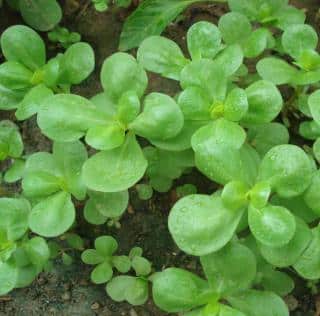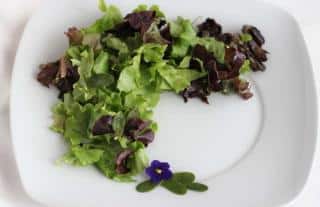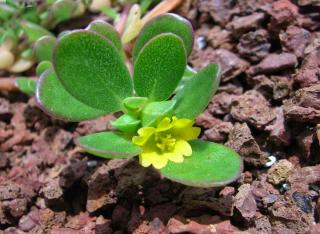

Purslane or Portulaca oleacera, is an annual crawling plant belonging to the Portulacaceae family. This plant is typical of the Mediterranean regions and is part of the Cretan diet.
The word purslane comes from the latin pullipedem, which means “chicken foot”, due to the resemblance of the plant with the foot of this bird. This plant is different from goosefoot, another edible weed.
The two most famous varieties are green purslane and golden purslane. But don’t confuse it with another plant often called “winter purslane”, which is a remote cousin but is actually miner’s lettuce.
In olden days, it was very much part of people’s diets. This plant was also much appreciated in the medicinal community.

Hippocrates identified it as having refreshing properties, while Galen proved its effectiveness against headache, toothache, inflammation and heartburn. Arabs in the Middle Ages called it the “blessed vegetable”, since according to them it healed Mohammed’s wounded foot.
Today, it isn’t so common anymore on the marketplace, and many mistakenly confuse it with common weeds.
Purslane is very low-calorie, only 16 kcal / 3.5 oz (100 g). Its high polyunsaturated fats (omega-3) contents protect the heart and its vascular system, reducing bad cholesterol levels (LDL). In herbalism, purslane is thus effective in preventing cardiovascular diseases, Type 2 diabetes and regulating arterial blood pressure.
Moreover, purslane is an important source of antioxidants (vitamin C and pro vitamin A) that protect the body from premature ageing and cancers, since it reinforces immune system defenses.
It also is a diuretic that turns laxative when ingested in high doses. It eliminates body waste.
Purslane leaves produce a substance that smoothens, heals wounds and reduces inflammations for skin and mucous membranes and tissues. Its leaves are also known to increase blood clotting capabilities. Chewing a couple purslane leaves can stop gum bleeding or bleeding in the mouth. Leaves are also helpful to women who experience metrorrhagia (uterine bleeding outside the normal menstrual cycle).
Purslane seeds have deworming effects. Used in decoctions, they eliminate intestine tract parasites. They are an effective remedy in case of dysentery.
Leaves and stems of the purslane plant seem to present hypnotic properties.
Purslane is recommended in case of hypertension, anemia, asthma and diabetes.
Infusions prepared from purslane leaves cleanse and soothe burns and stomach cramps. In case of hypertension and related restlessness or insomnia, it serves to help the body relax. Chewing leaves: against sore throat and gum inflammation.
Purslane leaf juice in case of of conjunctivitis, apply one drop at a time to clean the eyes and the eyelids inflammation. Purslane poultices, mashed with a spoonful of olive oil, is very effective to treat contusions, sore muscles and muscle cramps. When applied on the lower stomach, a poultice made from mashed leaves reduces flatulence.

Purslane can be eaten both raw and cooked.
Raw in salad, tzatziki-style.It is perfect paired with celery.
Cooked, it can garnish a pizza, a pie or even an omelet. We also like it fried in a pan with potatoes, onions and olive oil. Cook it in the same way you would spinach. Cold soup or cream soup is very refreshing and a pleasure to drink.
Purslane as used in cosmetology. An effective remedy against warts and acne: rub purslane leaves on the skin wounds regularly.

Sowing is from mid-May to end of July, in a sunny location (purslane tolerates heat very well).
Drainage is very important, hence the pozzolana in the photo. Harvest is 2 months after sowing.
Don’t delay in eating harvested purslane. It doesn’t keep for long after harvest. Did you know? The red or yellow flowers of the purslane plant only last a single day. Every day the plant bears new flowers.